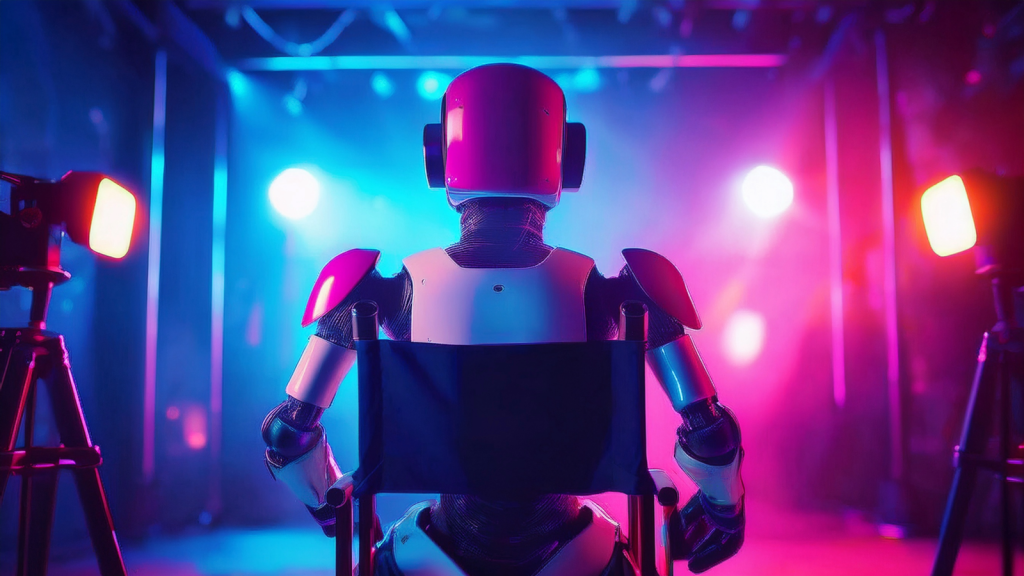Google’s Veo 3 Breaks Hollywood – And Wall Street Isn’t Ready
A few weeks ago, within the flurry of social media posts surrounding his feud with President Trump, Elon Musk made an astute observation.
“AI video generation is advancing at the speed of light.”
He is, of course, referring to Veo 3, Google’s latest AI video model. It can create high-quality, cinematic-level clips – complete with realistic visuals, synced audio, and dramatic camera movement – all from a simple text prompt.
For example, if you were to type: “A medium shot, historical adventure setting: Warm lamplight illuminates a cartographer in a cluttered study, poring over an ancient, sprawling map spread across a large table. Cartographer: “According to this old sea chart, the lost island isn’t myth! We must prepare an expedition immediately!” Veo 3 can create a fully rendered video that captures that scene within moments. No camera crew, actors, or editors – just AI.
It is the latest and most impressive model in a string of rapid advancements in AI video generation.
And the pace of this progress emphasizes one big-picture idea – with vast investment implications…
In our view, Hollywood as we know it is about to become extinct.
How AI Video Is Replacing Hollywood’s Outdated Model
See; classic Hollywood is bloated.
Historically, movie production has required countless roles, massive budgets, and, often, excessive amounts of time. You need writers, directors, actors, set builders, sound engineers, costume designers, editors, distributors… It is arguably one of the most complex, costly, and time-consuming processes in the world.
But now it seems likely that Big Tech will soon be able to bypass nearly all of that overhead.
With just a prompt, a powerful model, a GPU cluster, and a platform, AI can deliver near-masterpieces.
Take Alphabet (GOOGL), for example. Its Gemini language model could write the plot, which could then be fed into Veo 3 to generate the actual movie. Its SynthID could watermark it. Then, it could distribute the film through YouTube – which it owns – and monetize it with ads.
It is a full tech stack perfectly suited to create, produce, distribute, and monetize a movie.
Why pay for a $200 million studio film when your AI stack could test 10 versions of a story, optimize the thumbnail, target it to viewers, and go live in an afternoon for a fraction of that cost?
Big Tech Has the Data – and Now the Tools – to Win With AI Content
Though, production speed and cost are not Big Tech’s only advantages in this new era of AI content generation. Soon enough, quality will emerge as the biggest advantage of all.
That’s because while Hollywood tries to guess what you’ll watch next, Big Tech actually knows. It doesn’t just have AI models; it has vast amounts of behavioral data garnered from various surveillance-based business models.
Just consider YouTube. It knows:
- How long you watch a video
- Where you drop off
- What you click next
- What visuals get your attention
- What audio hooks keep you tuned in
Of course, in terms of user privacy, it’s a nightmare…
But for engineering content, it’s a silver bullet.
Hollywood rolls the dice on each release. But YouTube has the potential to run millions of real-time A/B tests and then release the winner. Gambling vs. science.
Not to mention, with 2.7 billion users and over 120 million daily viewers, YouTube is already the most-watched video platform on Earth.
In fact, more content is uploaded per minute to YouTube than Hollywood produces in a year.
It has built-in monetization with ads, real-time analytics, instant global distribution…
And now Veo 3 – the AI video generation model that can turn text prompts into Hollywood-quality video.
With that setup, any creator could generate full scenes, trailers, and short films with just an idea and a prompt.
So, the next Spielberg? Probably some 15-year-old with a Chromebook and an AI co-pilot.
AI Video Isn’t Just Faster. It’s Smarter, Cheaper, and Global
In our opinion, YouTube is what Hollywood would look like if it had no gatekeepers, infinite content, global reach, and direct monetization built in.
And now… it’s getting generative.
This is probably not great news for folks who work in the film industry. But we do think there is a striking silver lining here.
AI video generation tools could do more than automate production – they could end scarcity in content creation.
In the old model, studios had to raise capital, secure talent, build sets, schedule months of production, and pray for a hit. Doing all that took months and cost millions of dollars. And as such, the opportunity cost of a “miss” was enormous – so content creators were very selective with their shots on goal. They simply didn’t take many.
But in the new model, AI writes the script and renders the scenes. YouTube distributes it. Algorithms drive discovery… And the creator keeps the upside.
The economics are better. The speed is faster. The feedback loops are tighter. And the talent pool is billions of people – not just those who can get into Hollywood.
As a result, a lot more content will be created globally; maybe even hyper-personalized content created just for you and your interests?
This could be the beginning of something massive. Picture:
- Personalized AI-generated TV shows based on past video consumption behavior
- Creator-led studios using AI to scale ideas into franchises
- Viewers shaping plotlines in real time
- Entire genres built from data-driven experimentation
Perhaps, in a few years, you won’t ask, “What’s on Netflix?” You’ll ask: “What did YouTube make for me today?”
We see this as a potential future. And it’s a very exciting one.
The Final Word on the Future of Content Creation
To be sure, this may all sound very theoretical. But the seeds of disruption have already been planted…
Google has Veo 3. Meta (META) is aiming to automate its entire ad business by 2026. OpenAI’s Sora is nipping at Hollywood’s heels. TikTok is testing AI-powered content tools. Creators are already using ChatGPT and Runway to pump out clips daily.
The old studio model can’t compete with this scale, speed, or cost structure.
Big Tech has better tools and the distribution muscle to deliver hits at record pace.
A new Hollywood may have already arrived…
And it is time to invest.
That means buying stock in the AI video generation ecosystem like Alphabet, Meta, Amazon (AMZN), and Netflix (NFLX).
GOOGL stock looks particularly interesting. Many seem to be worried about its search business being disrupted by ChatGPT, which is causing a discount in its stock valuation. But very few are talking about the huge upside potential if YouTube becomes the new Hollywood.
That makes GOOGL stock look like a really good play here.
AI is quickly rewriting the script. And Big Tech is already casting itself in every major role.
But here’s the thing: when industries transform this quickly, fortunes get made – and lost – just as fast.
That’s why renowned futurist, InvestorPlace’s own Eric Fry, is stepping forward now.
He just released a new set of urgent trade recommendations: seven moves for this new era – what he’s calling the “Age of Chaos.” It includes which household names to drop immediately… and which surprise players could become the next Amazon-level winners.
If you want to survive and thrive in this new algorithm-driven economy, now is the time to see what Eric’s predicting next.
Learn Eric Fry’s seven urgent “Sell This, Buy That” signals – for free – right now.
The post Google’s Veo 3 Breaks Hollywood – And Wall Street Isn’t Ready appeared first on InvestorPlace.






